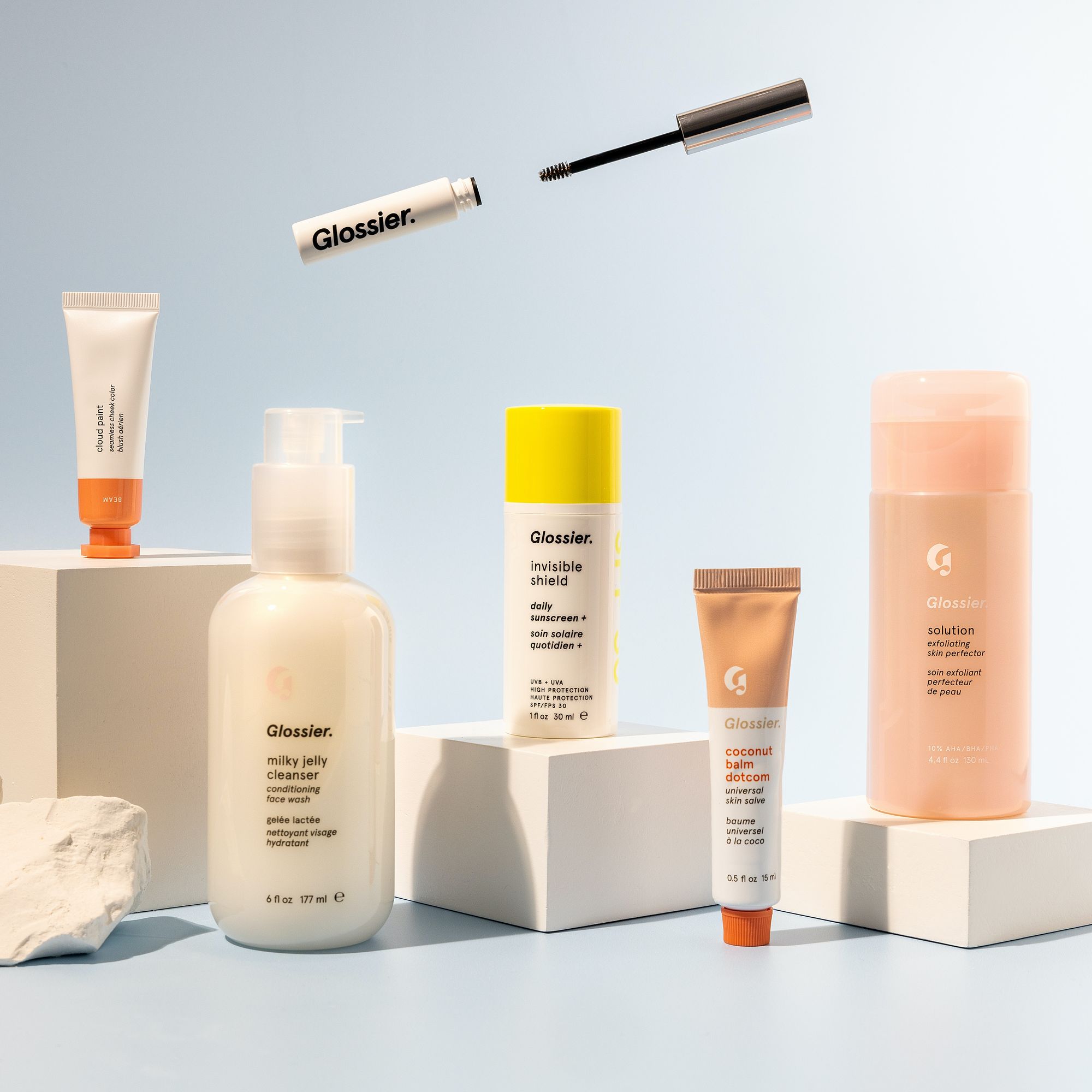Price bundling is a marketing strategy that involves selling two or more complementary products as a package at a discounted price, encouraging customers to make a single purchase instead of buying individual items separately.
This approach takes advantage of the concept that certain products tend to be used or consumed together, making it more convenient for customers to purchase them in a bundle.
Sellers can stimulate increased sales and boost their customer base by offering complimentary products as a bundle. Customers are enticed by the convenience and value proposition of price bundling, as they can save money by purchasing the bundle instead of buying each item individually.
This strategy also allows businesses to differentiate themselves from competitors and can lead to higher customer satisfaction. For sellers, price bundling has several benefits.
Firstly, it helps to maximize profitability by encouraging customers to make additional purchases or upgrade to a higher-priced bundle. Secondly, it allows for efficiently using excess inventory or low-volume items that may not sell well.
Finally, price bundling reduces marketing costs as companies can focus on promoting the bundle as a whole rather than marketing individual items. Price bundling is a strategic approach that benefits both customers and sellers.
How Is Price Bundling Beneficial
There are many benefits of price bundling for both customers and sellers. One of its primary advantages is providing customers with more value. By offering complimentary products as a bundle, sellers can create a package that meets a customer's needs more comprehensively.
Video Source: Economics in Many Lessons / YouTube
Customers can conveniently access all the products they need in a single purchase, saving them time and effort. Moreover, price bundling allows customers to save money.
By purchasing a bundle, customers can take advantage of discounted prices compared to buying each item individually. This sense of savings encourages customers to make additional purchases and upgrade to higher-priced bundles, increasing their overall satisfaction.
For sellers, price bundling is advantageous in several ways. Firstly, it enables sellers to move slow-moving inventory or low-volume items that may not sell well. By bundling these items with more popular products, sellers can increase their chances of selling them while maximizing their profits.
Additionally, price bundling reduces marketing costs. Instead of promoting individual items separately, sellers can focus their marketing efforts on promoting the bundle as a whole. This streamlines the marketing process and allows sellers to allocate their resources more efficiently.
Overall, price bundling is a beneficial strategy that provides value to customers, encourages additional purchases, and allows sellers to maximize their profits while efficiently managing their inventory. By offering bundles, businesses can attract and satisfy customers, leading to increased success.
Different Types Of Price Bundling
Price bundling is a marketing strategy involving offering multiple products or services at a single price. It benefits customers and sellers through cost savings, increased sales, and efficient marketing. There are various types of price bundling strategies that businesses can utilize to cater to different customer preferences and increase their profits.
Mixed Bundling: This strategy involves bundling complementary products that can enhance customer value or utility. For example, a smartphone company may bundle a phone with accessories like a screen protector, phone case, and charger. Mixed bundling allows customers to get multiple items they may need at a lower combined price.
Joint Bundling: In this type of bundling, products or services from different brands or businesses are bundled together to create a unique offering. For instance, a hotel might partner with a local attraction to offer a package that includes accommodation and tickets to the attraction. Joint bundling can mutually benefit the involved businesses by expanding their customer base and increasing sales.
Custom Bundling: Custom bundling allows customers to create their own bundles by choosing specific products or services from a list of options. This empowers customers to personalize their purchases and only pay for what they want or need. For instance, a streaming service might offer customers the option to choose their own bundle of channels or streaming platforms.
Leader Bundling: In this strategy, a popular or high-demand product is bundled with a less popular or low-demand product to encourage the sale of both items. For example, a gaming console could be bundled with a less popular game to boost sales. Leader bundling allows sellers to promote and sell slower-moving inventory by leveraging the popularity of other items.
By understanding and implementing these different price bundling strategies, businesses can cater to various customer preferences, increase sales, and maximize profits.
Complimentary Products
Complimentary products play a crucial role in price bundling, as they enhance the customer's buying experience and increase the overall value of the bundle items. Complementary products are items typically used together or can add value to each other when purchased as a bundle.
These products provide customers with convenience, cost savings, and a more comprehensive solution when bundled together. By offering complimentary products in a bundle, businesses can create a more attractive and appealing offer for customers.
The bundle provides them with everything they need in one purchase, eliminating the need to search and purchase each item individually. This saves customers time and reduces the hassle of making multiple transactions.

In addition to convenience, bundling complementary products also adds value for customers. They can enjoy cost savings as the bundled price is often lower than the combined individual prices of the products. Moreover, customers perceive the bundle as providing a more complete solution or experience, which increases its perceived value.
Common examples of complementary products frequently bundled include smartphones with accessories such as cases, headphones, and chargers; computers with software applications or peripherals; and food and beverage pairings like burgers and fries or pizza and soda.
Popular Products
Popular products are highly in demand and have a strong customer following. In the context of price bundling, popular products can be strategically included in bundles to attract customers and increase sales.
Price bundling allows businesses to leverage the popularity of certain products to create more enticing offers. By bundling a popular product with other complementary items, businesses can tap into the existing customer base of the popular product and encourage them to make additional purchases.
This increases sales and helps expand the customer base by attracting new customers whom the popular product may entice. Including popular products in price, bundles enhance their perceived value and appeal.
Customers are more likely to be attracted to a bundle with a desired product. Adding complementary items further enhances the perceived value by providing a more complete solution or experience.

This can also create a sense of urgency to purchase, as customers may fear missing out on such a desirable bundle. Some examples of popular products commonly included in price bundles are smartphones with popular accessories like protective cases and wireless earbuds, video game consoles with popular games and additional controllers, and home appliances with popular attachments or warranties.
These bundles attract customers with the allure of owning the popular product while offering additional value and convenience. Incorporating popular products into price bundles is an effective strategy to attract customers and increase sales.
By capitalizing on the existing demand and customer loyalty towards popular products, businesses can create compelling offers that provide additional value and enhance the overall buying experience.
Mixed Bundling
Mixed bundling is a pricing strategy combining elements of pure bundling and individual sales. Unlike pure bundling, where products are only sold as a bundle, mixed bundling allows customers to purchase items individually or as a discounted bundle. This flexibility gives customers more choices and can cater to varying needs and preferences.
One example of mixed bundling is the video game industry. Game developers often release expansion packs or downloadable content (DLC) that adds new features or levels to the base game.
Customers can purchase the base game as a standalone product or opt for a bundle that includes the base game and all the DLCs at a discounted price. This lets customers decide whether to experience the full game or just the base version.
Another example of mixed bundling can be seen in the fitness industry. Companies selling exercise equipment often offer bundles that include the leading equipment and accessories, such as workout mats, resistance bands, or fitness trackers.

Customers have the option to purchase these items individually or as a bundle. This allows customers to customize their purchases based on their needs and budget.
Joint Bundling
Joint bundling is a specific type of bundling strategy that involves offering multiple items as a single bundle, limiting the option to purchase those items separately. This bundling strategy aims to increase sales by encouraging customers to purchase the entire bundle rather than individual items.
Unlike other types of bundling, such as mixed bundling or custom bundling, joint bundling removes the choice for customers to pick and choose which items they want to purchase.
Instead, it presents a complete package of multiple items as a single unit. This strategy can be effective for businesses looking to increase their overall sales volume by incentivizing customers to buy multiple products or services together rather than selecting only one.
The key idea behind joint bundling is that customers may be more willing to purchase a bundle of products if they perceive a greater value or benefit than buying each item separately. By combining multiple items into a single bundle, businesses can create a compelling offer that appeals to customers who prefer convenience and a comprehensive approach.
Joint bundling involves offering multiple items as a single bundle, limiting the option to buy them separately. This bundling strategy aims to increase sales by encouraging customers to purchase the entire bundle rather than individual items.
By leveraging the power of perceived value and convenience, businesses can effectively utilize joint bundling to drive customer purchases and boost overall revenue.
Mixed-Leader Bundling
Mixed-leader bundling is a pricing strategy combining elements of pure and mixed bundling. In this approach, businesses offer a bundle of products or services that includes one popular or highly desirable item (the "leader") and other complementary or less popular items.
The leader item is the main attraction and is often priced lower than if purchased separately. The other items in the bundle are typically priced at a higher margin to offset the lower price of the leader item. This strategy aims to attract customers with the appeal of a discounted or value-packed offer centered around the popular product.

Mixed-leader bundling differs from pure bundling, where customers must buy all items together, and mixed bundling, where customers can choose a subset of the items in the bundle at a discounted price.
Implementing mixed-leader bundling in a marketing strategy can have several benefits. It allows businesses to leverage the popularity of a leader item to increase sales of other less popular items.
It can also enhance customer experience by providing a convenient, value-packed bundle. However, there are challenges to consider, such as determining the right combination of items and pricing the bundle effectively to maximize profitability.
Mixed-leader bundling is an effective pricing strategy that combines a popular item with complementary products to create a value-packed bundle. By offering a discounted price for the bundle, businesses can incentivize customers to purchase multiple items together and increase overall sales.
Custom Bundling
Custom bundling is a strategic pricing technique that goes beyond traditional bundling methods. Unlike pure bundling, where customers must buy a pre-determined set of items together, custom bundling allows businesses to offer personalized bundles tailored to customers' specific needs and preferences.
With custom bundling, businesses can create bundles based on individual customer requirements. This approach recognizes that each customer has unique needs and preferences and aims to provide a buying experience more aligned with their tastes.
The advantage of custom bundling is that it allows businesses to offer a more personalized product offering, enhancing customer satisfaction. Businesses can create a tailored solution that meets their precise needs by enabling customers to choose their bundle composition. This customization can include color preferences, size options, or selecting specific accessories.
Moreover, custom bundling allows businesses to target different customer segments. By offering a range of bundle options, businesses can cater to varying preferences and budgets, appealing to a broader customer base. This can ultimately lead to increased sales and customer loyalty.
Custom bundling allows businesses to offer personalized bundles tailored to customers' needs and preferences. This unique approach provides advantages such as increased customer satisfaction and the ability to target different customer segments.
By acknowledging and accommodating individual preferences, businesses can differentiate themselves in the market and foster strong customer relationships.
Pricing Strategies For Product Bundles
Pricing strategies for product bundles play a crucial role in the success of businesses. This approach has gained popularity among businesses and customers as it provides various benefits. Businesses can increase sales, attract new customers, and enhance customer satisfaction by strategically pricing bundles.
We will explore different pricing strategies for product bundles and their impact on businesses. We will discuss the advantages of bundle pricing, such as increased customer value, higher profit margins, and competitive advantage.
Single Price Strategy
The single-price strategy is a key component of price bundling, a marketing technique where a bundle of products or services is offered at a fixed price. With this strategy, customers cannot purchase individual items separately at different prices. Instead, they must buy the entire bundle for a single price.
This pricing approach holds significant importance as it simplifies the buying experience for customers. By offering a bundle of products or services at a single price, customers don't have to make individual purchase decisions for each item. This eliminates the complexity of selecting and pricing each item separately, making the buying process more straightforward and convenient.

Moreover, the single-price strategy can increase sales by encouraging customers to consider additional purchase decisions. Customers may be more inclined to purchase a bundle at a fixed price, as they perceive added value in obtaining multiple items for a single transaction. This can help increase the customer base and generate additional revenue.
The single-price strategy in price bundling simplifies the buying experience for customers and potentially increases sales by offering a bundle of products or services at a fixed price. It eliminates the need for customers to make individual purchase decisions and encourages them to consider additional products or services.
Individual Prices Strategy
Individual prices strategy, also known as unbundling strategy, is a pricing approach that differs from other price bundling strategies such as pure bundling and mixed bundling. With individual prices, businesses offer customers the option to purchase each item separately instead of bundling them together.

One of the main benefits of the individual prices strategy is that it gives customers more flexibility in their purchasing decisions. Customers can buy only the items they need or are interested in rather than being forced to purchase a bundle that includes items they may not want.
This can increase customer satisfaction as they have more control over their buying choices. Another advantage of the individual prices strategy is that it allows businesses to cater to a broader range of customers.
Some customers may only be interested in a specific product or already own some items in a bundle. By offering individual prices, businesses can attract and accommodate these customers, increasing the likelihood of making a sale.
However, the individual prices strategy also has some drawbacks. One potential disadvantage is that it may result in lower average transaction values than bundle pricing strategies.
Since customers can select only certain items, the overall purchase value may be lower. Additionally, businesses may need to invest more in marketing and promotion to sell individual items than bundled products successfully.
An example of a business that has successfully implemented the individual prices strategy is an electronics retailer offering customers the option to purchase specific computer components separately. This allows customers to customize their purchases based on their needs and budget.
The individual prices strategy for price bundling offers customers more flexibility and choice in their purchase decisions. While it may result in lower average transaction values, it can attract a broader range of customers and increase overall customer satisfaction. Businesses should carefully consider their product offerings and target market when deciding whether to implement individual prices.
Entire Bundle Pricing Strategy
The entire bundle pricing strategy is a pricing approach that offers customers the option to purchase a bundle as a whole without the ability to buy individual products or services separately. With this strategy, businesses package multiple products or services and set a single price for the entire bundle.
One variation of the entire bundle pricing strategy is pure bundling, where all the items in the bundle are only available as part of the bundle and cannot be purchased individually.
This strategy is commonly used when there is a strong complementarity between the products or services within the bundle. By offering the bundle, businesses can encourage customers to see the value and benefits of purchasing all the items together, leading to increased sales and higher transaction values.
Another variation of the entire bundle pricing strategy is leader bundling. In leader bundling, one product or service holds more value. This helps to move lower-value inventory by pairing it with a popular or high-demand product.
It creates a win-win situation where customers get a desirable product and additional items, and businesses can clear out slow-moving inventory while still making a profit.

Joint bundling is another form of the entire bundle pricing strategy, where businesses collaborate with other companies to offer a bundle that combines their products or services.
This strategic partnership allows both companies to reach new customer bases and create a unique value proposition that differentiates them from competitors. For example, sports teams often use an entire bundle pricing strategy by offering season tickets, which include admission to all home games throughout the season.
By bundling tickets, fans benefit from attending multiple games at a discounted price, and the team ensures higher attendance and revenue.
Overall, the entire bundle pricing strategy allows businesses to bundle multiple products or services, offering customers a comprehensive package at a single price. This approach can enhance product offerings, increase sales, and create value for the business and the customer.
Marketing Costs Associated With Product Bundle Strategies
Marketing costs play a crucial role in implementing and succeeding product bundle strategies. These costs can vary depending on the specific bundle pricing strategy businesses employ.
Advertising expenses are a significant factor in marketing costs for product bundle strategies. Promoting the bundled products or services through various channels, such as television ads, online campaigns, or print media, requires financial investment.
Businesses need to consider the reach and effectiveness of these advertising efforts to ensure maximum visibility and attract potential customers. Similarly, promotion costs, including discounts and incentives, are essential for driving sales and creating customer interest in the bundle.
Offering limited-time promotions, loyalty rewards, or exclusive deals can incur expenses that must be factored into the overall marketing costs. Packaging design is another factor contributing to marketing costs.
The bundle's packaging should effectively communicate the value and contents of the bundle, which often requires designing unique packaging or labels. Additionally, businesses may need to invest in packaging materials to accommodate multiple items, ensuring the bundle arrives intact and visually appealing to customers.
Considering the impact of marketing costs is crucial for assessing the profitability of the bundle pricing strategy. While these costs incur initial expenses, they are essential in reaching potential customers, increasing sales, and creating a positive buying experience.
Hence, businesses must carefully strategize and allocate their resources to ensure that the marketing costs result in a profitable return on investment for the product bundle strategy.
Frequently Asked Questions
What is price bundling?
Price bundling is a marketing strategy where multiple products or services are offered as a combined package at a single price point. It aims to offer customers a more attractive and cost-effective buying experience by offering complementary items or services.
Why do businesses use price bundling?
Businesses use price bundling to increase sales and customer satisfaction. They encourage customers to make additional purchases and increase average transaction value by offering a suite of products or services. Bundling also helps to clear out low-volume items and create customer interest in less popular products.
Are there different types of price bundling?
Yes, there are different types of price bundling. One common type is mixed bundling, where products from different categories are packaged at a discounted price. Another type is leader bundling, where a popular or flagship product is bundled with other complementary products.
How does price bundling benefit customers?
Price bundling benefits customers by offering convenience, cost savings, and a more comprehensive solution to their needs. It allows them to purchase multiple items in a single transaction, often at a discounted price, compared to buying individual items separately.
What are the disadvantages of price bundling?
Some disadvantages of price bundling include the potential for customers to purchase items they do not need, the risk of cannibalizing sales of individual products, and the complexity of managing inventory and pricing for bundled items.
How can businesses determine the price for bundles?
Businesses should consider the individual prices of the bundled items, the perceived value of the bundle to customers, and the potential competitive pricing. Analyzing customer preferences, conducting market research, and experimenting with different pricing strategies can help businesses determine the optimal price for their bundles.
Can customers customize their own bundle?
Yes, some businesses offer a "choose-your-own bundle" option where customers can select specific items or services to include in their bundle. This customization allows customers to create a package that aligns with their preferences and needs.
What are some examples of successful price bundling strategies?
Examples of successful price bundling strategies include offering discounted vacations with hotel, flight, and car rental included, software packages that include multiple programs at a lower price, and fast food combo meals that include a burger, fries, and a drink.
How do businesses promote bundled products?
Businesses promote bundled products through various marketing channels, such as advertising campaigns on television, online platforms, or print media. Additionally, businesses may use limited-time promotions, loyalty rewards, or exclusive deals to create customer interest and drive sales.
Are there any studies or research on the effects of price bundling?
Several studies have investigated the effects of price bundling on consumer behavior and business operations. These studies are often published in academic journals like the Journal of Marketing, providing valuable insights into the benefits and challenges of implementing price bundling strategies.


